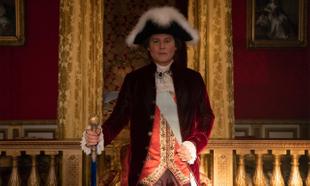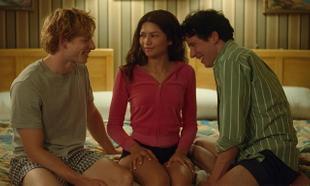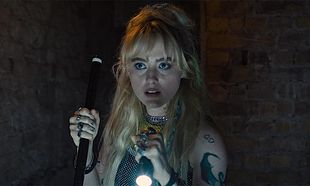Three stories of unrequited love intertwine in this 1990-set grim Polish drama. Agata (Kijowska) lives on an ugly housing estate with her factory worker husband Jacek (Lukasz Simlat) and teenage daughter, helping the family to eke out a living by selling copied VHS tapes to the neighbourhood. She is obsessed with the local priest, with oblivious hubby the victim (and beneficiary) of her sexual frustration. Meanwhile friend and local school principal Iza (Cielecka) is desperate to hang on to the affair with widower Karol (Andrzej Chyra), and Renata (Kolak) believes that the secret love she has for her pretty aerobics instructor neighbour Marzena (Marta Nieradkiewicz) will no longer go unrequited…
A winner of this year's Silver Berlin Bear (and many more), United States of Love is a close cousin to Ulrich Siedl's Paradise trilogy. Like the Austrian filmmaker's outings it's a bleak thing, both in theme and look: director Tomasz Wasilewski employs Romania New Wave cinematographer Oleg Mutu (Beyond The Hills, Death of Mister Lazarescu, and 4 Months, 3 Weeks and 2 Days) whose washed out visuals add to the dreariness of everyday life.
This place is a far cry from the optimism after the fall of communism: the empty, dimly-lit streets, the frosted ground, the grey buildings – everything's a downer. There's no love to be found and even the sex is a joyless affair. "What does love give us?" asks Agata's priest. Sourness, bitterness, sadness, loneliness, violence and hatred is the answer. Like Seidl's films (Hope, Love, Faith) the title is an ironic one.
Wasilewski utilises the cramped environs of the tiny apartments to get under the skin of his characters, and in having lead characters in one story pop up as support in others manages to link the vignettes in more than theme. He can switch from handheld tracking shots á la the Dardennes to long static shots, forcing the actors to walk in and out of frame, but the switch in styles don't jar.
But despite Wasilewski's astute eye and his skill in pulling strong performances from his four leads – the desperate loneliness etched on their faces throughout - the observational style can leave one rather cold and disengaged from time to time. There are one or two big shocks, which would usually dominate narratives thereafter, but are left frustratingly unexplored.








































































